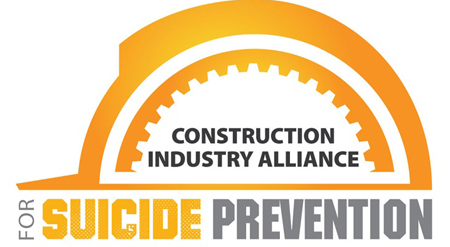 In the following piece, Greg Sizemore, ABC Vice President of Health, Safety, Education and Workforce Development highlights the alarming rise in suicide rates and how the industry is approaching the problem:
In the following piece, Greg Sizemore, ABC Vice President of Health, Safety, Education and Workforce Development highlights the alarming rise in suicide rates and how the industry is approaching the problem:
Since the invention of hard hats in 1919 to the founding of the Occupational Health and Safety Administration in 1971 and the recent use of drones to conduct safety inspections, leaders in the merit shop construction industry have been working for decades to identify, implement and fine-tune best-in-class jobsite safety practices. We are fortunate to have made significant progress in pursuit of zero-incident construction jobsites over the last few decades.
In today’s construction industry, safety is paramount. And at ABC, a national construction association representing more than 21,000 members, we believe that it is our responsibility to ensure all construction workers go home in the same—or better—condition than when they arrived on the jobsite.
While the number of construction jobsite fatalities due to accidents has been trending downward over the decades, deaths by suicide among construction workers have increased.
Men in the construction and extraction industry had the highest rate of suicide among all occupational groups in the United States in 2015, according to the U.S. Center of Disease Control and Prevention. From 2012 to 2015, the rate of suicide among male construction workers increased more than 20%, based on deaths per 100,000 males.
Statistically, construction employees are at a higher risk because men, who make up 91% of the construction workforce, are more likely to die by suicide. In addition, the industry employs a large population of veterans, who are at a 1.5 times greater risk for suicide compared to non-veterans, according to the U.S. Department of Veterans Affairs.
This is a public health crisis, and we must do better for our workforce and their families.
In 2016, the Construction Financial Management Association established the Construction Industry Alliance for Suicide Prevention. Now counting more than 75 industry organizations as members, including ABC, we are united in our dedication to reducing suicide risk across the construction industry, equipping companies to better address mental health issues and promoting the safety and well-being of construction’s most important asset—our people.
Americans spend many hours at the workplace each week, making it a vital touchpoint for providing access to mental health resources for working-age adults. In fact, the Surgeon General’s 2012 National Strategy for Suicide Prevention specifically targets employers as critical stakeholders in the prevention of suicide. Across the construction sector, we must rise to meet this challenge by incorporating mental health and wellness as core business values.
To start, we need to institute comprehensive mental health and suicide prevention policies, including employee assistance and treatment programs and crisis intervention education. We also need to shatter the stigma around mental health problems and put in place mental health safety measures with the same steadfastness that we do for physical health and safety.
We also need to focus on access. Contractors can take several steps to ensure their workers have the information and resources they need to ask for and receive help: promote employee assistance programs and other mental health services; improve mental health literacy by educating workers about psychological safety in the same way we do physical safety; provide wellness workshops; and post resources, such as the National Suicide Prevention Lifeline phone number.
There is emotional work, too: We must stop the societal shame surrounding mental health issues, especially in a male-dominated, physical industry such as construction. We need to foster a caring environment that includes an open-door policy and strong interpersonal communication. A simple “how are you doing?” can be a lifeline to someone who is struggling. We also need to educate supervisors to be able to identify and address signs of mental distress, to have difficult conversations and then to follow up.
Simply put, suicide prevention is incumbent on all of us—especially considering the U.S. suicide rate among working adults increased by 34% from 2000 to 2016. It is our responsibility not just on construction jobsites, but also in our schools and workplaces, and with our families, friends, and communities. If we choose to lead, if we choose to commit and if we choose to transform, together we will reach the only acceptable number of construction workers dying by suicide: zero.
Learn more at preventconstructionsuicide.com.
Greg Sizemore is a trustee of the Construction Industry Alliance for Suicide Prevention.


